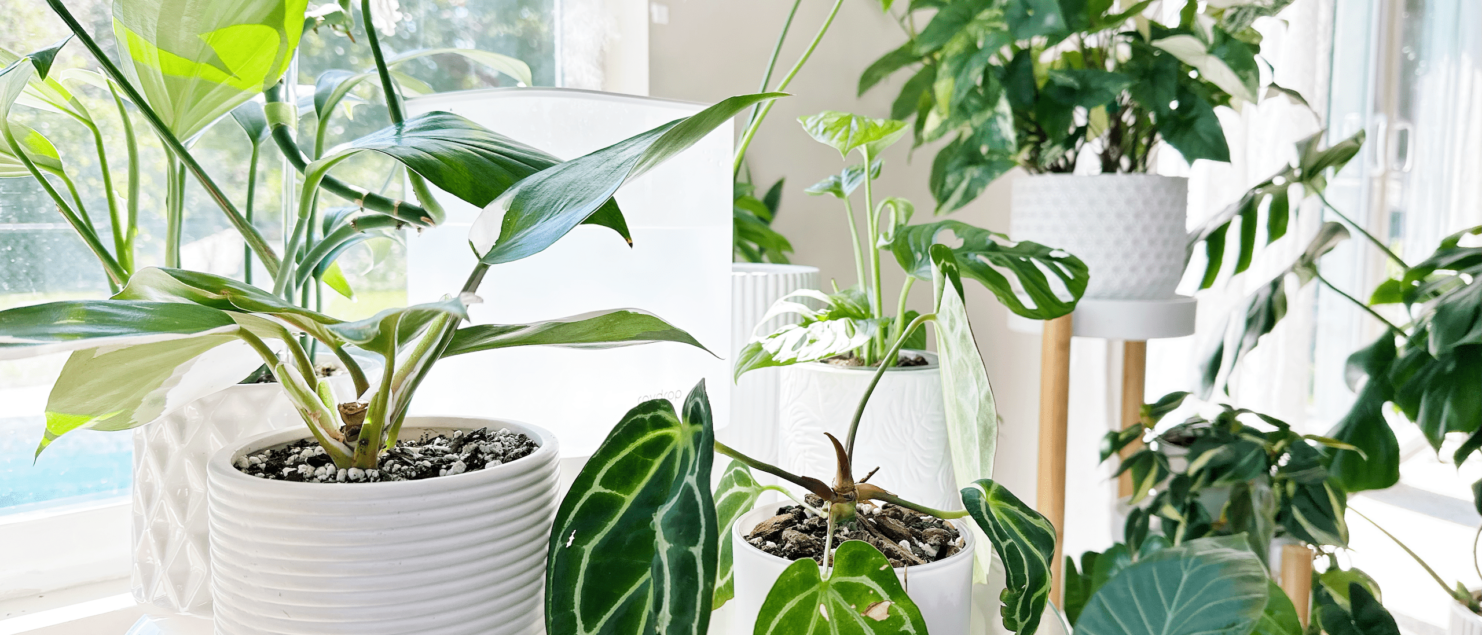Changes Houseplants Make In The Fall/Winter
Many changes will happen to your houseplants in the fall/winter that may seem alarming at first, but no worries because these changes are completely normal.
When I first got into houseplants, this time of year sent my anxiety into overdrive. I thought my plants were dying. But I’m here to put your mind at ease.
Here are a few things your houseplants will show you in the fall/winter and some tips and tricks you can do to keep your plant happy in the non-growing seasons.
Slower Growth
With the sunlight not brightening up our homes as much, this can contribute to slower growth on your houseplants, which is called dormancy.
Think of dormancy like hibernation.
In nature, plants will go dormant to prepare themselves for the cold of winter. With this, plants go dormant due to the lack of nutrients available since the amount of daylight in the winter is greatly reduced than it was in the spring/summer.

Plants will store up all the energy they can just before winter and reserve it so they survive those dark, frigid days ahead.
Although our homes aren’t going to get as cold as the outdoors, plants have this dormancy coded in their DNA. So, don’t be alarmed if your plants go completely dormant. They will bounce back in the spring.
Here’s how to bring your plants back from dormancy.
Less Watering & More Humidity
In the fall/winter your houseplants won’t grow as rapid as they did in the spring and summer. This is due to lower light because of the shorter sunlit days. Plants that aren’t getting as much light will retain more water in the soil. Which means you’ll find you won’t need to water them as often.
Not needing to water as often is probably one of the best changes houseplants make in the fall/winter.

With the temperature dropping, your home humidity will drop alongside. Winter air is dry, and your plants will need the humidity to increase.
Running humidifiers, most of the day will be more beneficial than not. Try running them every day for 6-8 hours a day. If a humidifier isn’t giving your plants enough humidity, you might want to get a terrarium – especially so for tropical plants.
Dying Leaves
In the non-growing seasons, you’ll start to see a few yellowing leaves and that’s ok. This is a normal process your plant will go through during the end of the year. It’s basically shedding off the older leaves.
Make sure you keep an eye on the plant in case the yellowing is from disease, pests, or overwatering. Generally, a plant will yellow the bottom leaves – which are the oldest.

If you see any yellowing leaves, you can remove them by snipping them off with clean shears/scissors. Partially yellowing leaves can still send energy to the plant, but if they drive you crazy, like they do me, you can snip them off. Removing fully yellow leaves will help the plant redirect energy to producing newer leaves. Conserving energy for your plant is best, since it’s essentially running on stored/less energy. Also, keep in mind that yellow leaves are dead and won’t revert.
You can also start pruning back some plants that got a little too wild over the summer in the late summer to early fall.
Increase In Pests
One uneasy change houseplants make in the fall/winter are how attractive they become to pests. Pests seem to pop out of nowhere in late summer to fall/winter. I notice an increase in pest activity in late August.
Beware because pests are attracted to dead or decaying debris. They love to nest on any dead or dying leaves – which is why I’d suggest pruning them.

Captain Jack’s Dead Bug Brew takes care of most common houseplant pests.
Wiping down your leaves and examining your houseplant is best practice – no matter the season. Since you’re not spending so much time on watering, you’ll have extra time to make sure your plants aren’t getting munched on.
If you notice some pests lurking on your leaves check out this blog to help get rid of them.
That’s Just The Way It Is
Changes houseplants make in the fall/winter can seem scary. Anyone who hasn’t had a fall/winter with their plants may think that their plant is dying.
Trust me – I definitely did.
If any of these are happening to your houseplants, take a deep breath and assess it. You’re a good plant parent and we can all get through these dark and cold days together!

